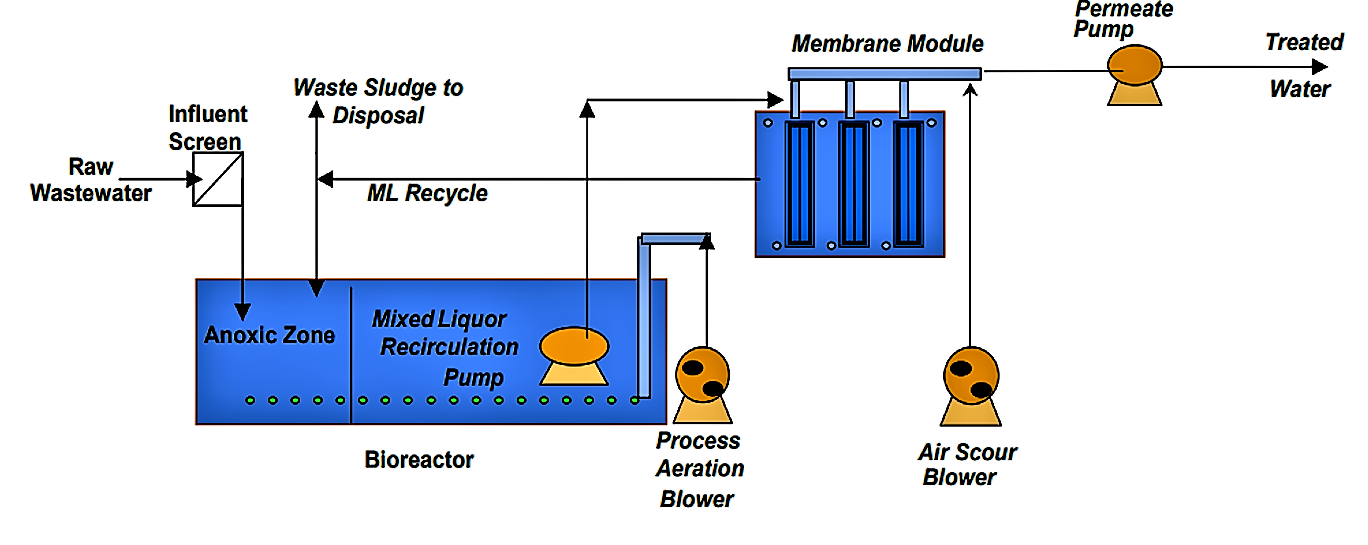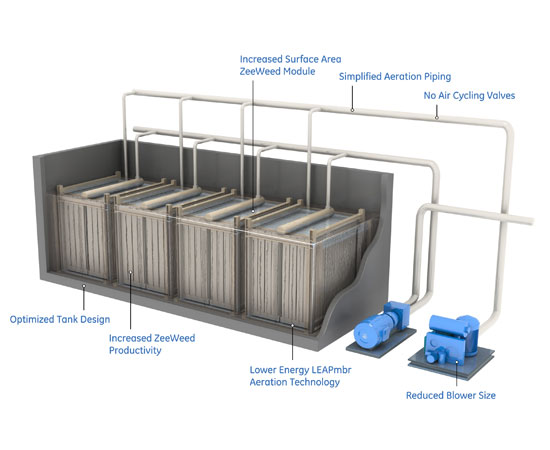How Membrane Bioreactor Technology Is Revolutionizing Wastewater Treatment
Wiki Article
Understanding Membrane Layer Bioreactors: The Future of Wastewater Treatment
Membrane layer bioreactors (MBRs) stand for a noteworthy advancement in the area of wastewater therapy, integrating organic procedures with innovative membrane filtration to enhance effluent high quality. As worldwide water scarcity and strict regulative structures become significantly pushing issues, MBR innovation uses an effective feedback via its ability to decrease footprint and maximize source healing. The adoption of MBRs is not without its challenges, which warrant careful consideration. What are the key elements influencing their execution and long-term feasibility in numerous contexts? The answers may reshape our approach to wastewater monitoring.What Are Membrane Bioreactors?

The core parts of MBR systems consist of a bioreactor where microbial task occurs and a membrane system that filterings system the mixed alcohol. This twin functionality allows the synchronised degradation of raw material and solid-liquid separation in a single step. MBRs can operate in both submerged and exterior configurations, with submerged systems being a lot more typical due to their portable design and operational effectiveness.
The adoption of MBR technology has gained traction in numerous applications, ranging from local wastewater therapy to industrial effluent monitoring. MBRs are specifically advantageous in circumstances where area is rigorous or minimal effluent high quality criteria should be satisfied. By keeping a high concentration of bacteria within the bioreactor, MBRs improve the deterioration of organic contaminants, thus producing greater therapy performances compared to conventional approaches.
Secret Benefits of MBR Modern Technology
The assimilation of biological treatment with membrane filtration in MBR systems uses countless advantages that set it aside from standard wastewater therapy approaches. Among the primary benefits is the boosted effluent quality. MBRs effectively eliminate put on hold solids and virus, attaining greater levels of purification that meet rigid discharge standards and facilitate water reuse applications.
Another significant advantage is the lowered sludge production. MBR systems produce much less excess sludge, resulting in lower disposal expenses and a reduction in environmental influence. The shut nature of the membrane layer system minimizes the risk of odor discharges and improves total process control.
Finally, MBRs are versatile and flexible, making them appropriate for various wastewater kinds, consisting of commercial and municipal resources. The capacity to integrate with sophisticated therapy modern technologies further boosts their performance, making MBRs an encouraging option for the future of wastewater administration.
Challenges and Limitations of MBRs
While MBR modern technology provides various advantages, it additionally faces a number of obstacles and restrictions that can impact its extensive adoption. One considerable challenge is the high resources and functional prices related to MBR systems. The preliminary financial investment for membrane materials and the essential facilities can be substantial, making it less obtainable for smaller sectors or municipalities.Additionally, membrane fouling remains an essential issue that can decrease system efficiency and increase maintenance demands. Fouling occurs when solids, organic matter, or bacteria collect on the membrane layer surface area, causing minimized leaks in the structure and needing regular cleansing or replacement.
Another limitation includes the intricacy of the technology. MBR systems need competent personnel for operation and maintenance, which can be an obstacle in areas with minimal technical expertise. Additionally, the disposal of invested membranes offers ecological worries, as the materials are usually not biodegradable and can add to lose administration obstacles.
Last But Not Least, while MBRs can successfully deal with a wide range of wastewater, they might not be appropriate for all applications, particularly those with high concentrations of fats, oils, and greases, necessitating further study and advancement to attend to these restrictions.
Applications of Membrane Bioreactors
In different sectors, membrane layer bioreactors (MBRs) have actually arised as a versatile option for wastewater treatment (Membrane Bioreactor). Their applications cover local, commercial, and agricultural settings, showcasing their flexibility and efficiency in varied environments. In local wastewater treatment plants, MBRs considerably enhance effluent top quality, permitting water reuse and decreasing the ecological effect of released wastewaterIndustrially, MBRs are employed in food and drink processing, fabric production, and pharmaceutical production, where they efficiently deal with high-strength waste streams. Their capacity to manage differing and changing tons impurity concentrations makes them specifically important in these industries. In addition, MBRs assist in the removal of microorganisms, suspended solids, and raw material, adding to compliance with rigorous discharge regulations.
In agriculture, MBRs are significantly used for treating farming runoff and animals wastewater, making it possible for the healing of nutrients for plant food production. They also help in the therapy see this page of greywater for irrigation, promoting lasting water administration methods.
The versatility of MBRs is further shown by their assimilation with other modern technologies, such as anaerobic digestion and progressed oxidation procedures, improving total efficiency and resource recovery in wastewater therapy systems.
The Future of Wastewater Treatment
Advancements in modern technology and a growing emphasis on sustainability are forming the future of wastewater therapy. Membrane bioreactors (MBRs) exhibit this shift by integrating organic treatment processes with membrane purification, causing top quality effluent appropriate for reuse. The fad towards circular economies is prompting centers to take on MBRs for their ability to recoup resources, such as water and nutrients, from wastewater.Advancements in membrane materials and arrangement are enhancing the effectiveness and durability of MBR systems, decreasing functional expenses and power consumption. Smart technology integration, including real-time tracking and automated control systems, is further maximizing performance and enabling anticipating upkeep, therefore decreasing downtime.
Additionally, governing stress and societal expectations are pushing communities and markets to embrace even more sustainable methods. Membrane Bioreactor. The change in the direction of decentralized wastewater therapy options is getting traction, enabling local therapy that minimizes transport prices and power usage
Final Thought
Membrane bioreactors (MBRs) represent a transformative technique to wastewater therapy, integrating biological procedures with sophisticated membrane technology. The benefits of MBRs, consisting of boosted effluent high quality, decreased spatial needs, and reduced sludge production, place them as a practical remedy amidst expanding urbanization and stricter ecological laws. Despite existing difficulties, the ongoing technology over here in membrane materials and functional strategies guarantees to boost the efficiency and adoption of MBRs, guaranteeing their pivotal function in the future of lasting wastewater management.Membrane bioreactors (MBRs) stand for a significant development in the area of wastewater therapy, integrating biological processes with advanced membrane filtering to improve effluent top quality.Membrane layer bioreactors (MBRs) incorporate organic therapy procedures with membrane layer purification to properly deal with wastewater.The assimilation of organic therapy with membrane filtering in MBR systems provides numerous advantages that establish it apart from typical wastewater therapy techniques. Membrane bioreactors (MBRs) additional reading exemplify this change by integrating biological treatment procedures with membrane filtration, resulting in top quality effluent appropriate for reuse.Membrane bioreactors (MBRs) represent a transformative method to wastewater therapy, integrating biological procedures with innovative membrane layer technology.
Report this wiki page